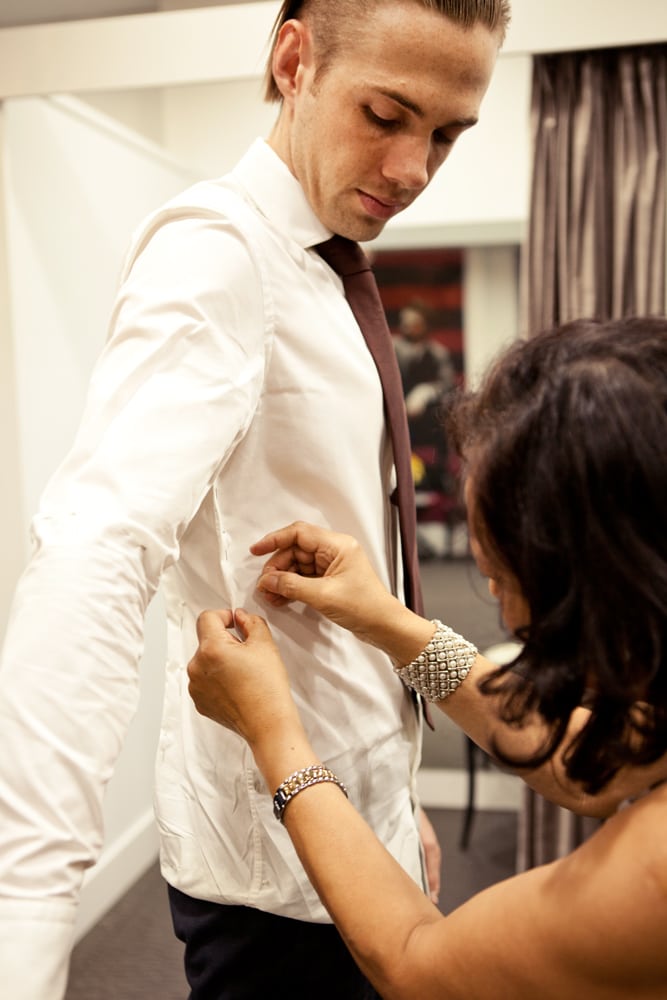7 things to look for when choosing a tailor
A tailor should be a part of your wardrobe building team. With each visit, your tailor will get to know your shape and style more and more, until you build a seamlessly trusting relationship. But how do you find a reputable tailor who will look after your clothes? Here are 7 things to look for when you are finding your next tailor.
Do they have good/genuine client testimonial and reviews?
The first thing to look for is genuine client reviews. Find out what kind of jobs they specialise in. What is their level of customer service and how do they handle difficult situations? How they treat their clients is a reflection on how they will look after your order. What is their turnaround time and are they flexible to the client’s needs. There is no use going to a tailor that takes 2 weeks to turnaround a hem. What is their average cost and is it comparable to other tailors at the same level. Most importantly, what is the quality of their work? These are all important factors to decide who is going to look after your precious garment.
Are they specialised in your garment?
When you walk in the store, have a look at the amount of work that’s on their racks or in the workroom. What are the different types of work hanging there, and are they similar to yours. For example, if you want your suits altered, you would want to go to a tailor who specialises in suits. If you want a wedding dress altered, you would find a tailor whose shop is full of wedding dresses for alterations.
Do they have evidence of their work?
If you are not sure, ask them to show you some of the work they have done before. Eg. Ask them to show you a jacket sleeve that they have finished shortening. This is a common alterations job, but few people can do it well. It is a good indication of the calibre of work that can be performed by the tailors. Make sure you look inside the cuffs as well, to check there are no visible stitching, wrinkling or frayed edges.
Who are their clients?
Are the other customers in the store of a similar demographic as you? If their regular clients are seeking out cheap deals, and you want quality alterations, then you are probably in the wrong place. Do they have partnerships with other businesses? Eg. TFR are the contracted tailors for Hugo Boss, Canali, Rhodes & Beckett and dozens more.
Have they worked with this brand?
Ask the tailors if they have work with your brand of clothing before? Many brands make their garments differently, and some have special features. Make sure the tailor has worked with a range of brands and design previously, and they are able to maintain the specialty of your garment. Eg. Surgeons cuffs are functional buttonholes on the cuffs of sleeves. Many high end brands make their suits with surgeons cuffs, and they can only be shortened from the shoulder of the jacket. This is an extremely delicate alterations, performed by highly experienced tailors.
How long have they been in business?
The history of a company is also an important element when choosing a tailor. Some companies can claim they have been in business for decades, but some crucial things to consider are: who is the current owner? How long have they had this business for? What is their experience? Do they actually work in the business? Are they passionate about what they do? Do they take pride in their work? Major franchises can claim to be a big operation with a long history. However, as most franchises go, the staff that work there may not have the necessary experience to complete complicated alterations, nor have enough vested interest to provide quality service.
Are they giving you honest advice?
The last point is also one of the most important points to consider. Is the tailor giving you honest advice? Do they listen to your requirements, then helping you fit the garment to your individual shape and style? Or are they giving you the basic offer they give to every customer, even if it is not a necessary alterations?
For example: a client may brings some trousers to a tailor to have the legs taken in by a couple of inches so he looks more fashionable. The tailor listens and does exactly what the client says and the client ends up ripping the trousers on the first wear. A more experienced tailor with styling experience will look at the body shape of the client, and advice that the legs cannot be tapered more than half an inch, because the trousers are not a stretchy fabric, and it is already sitting well on the body.

